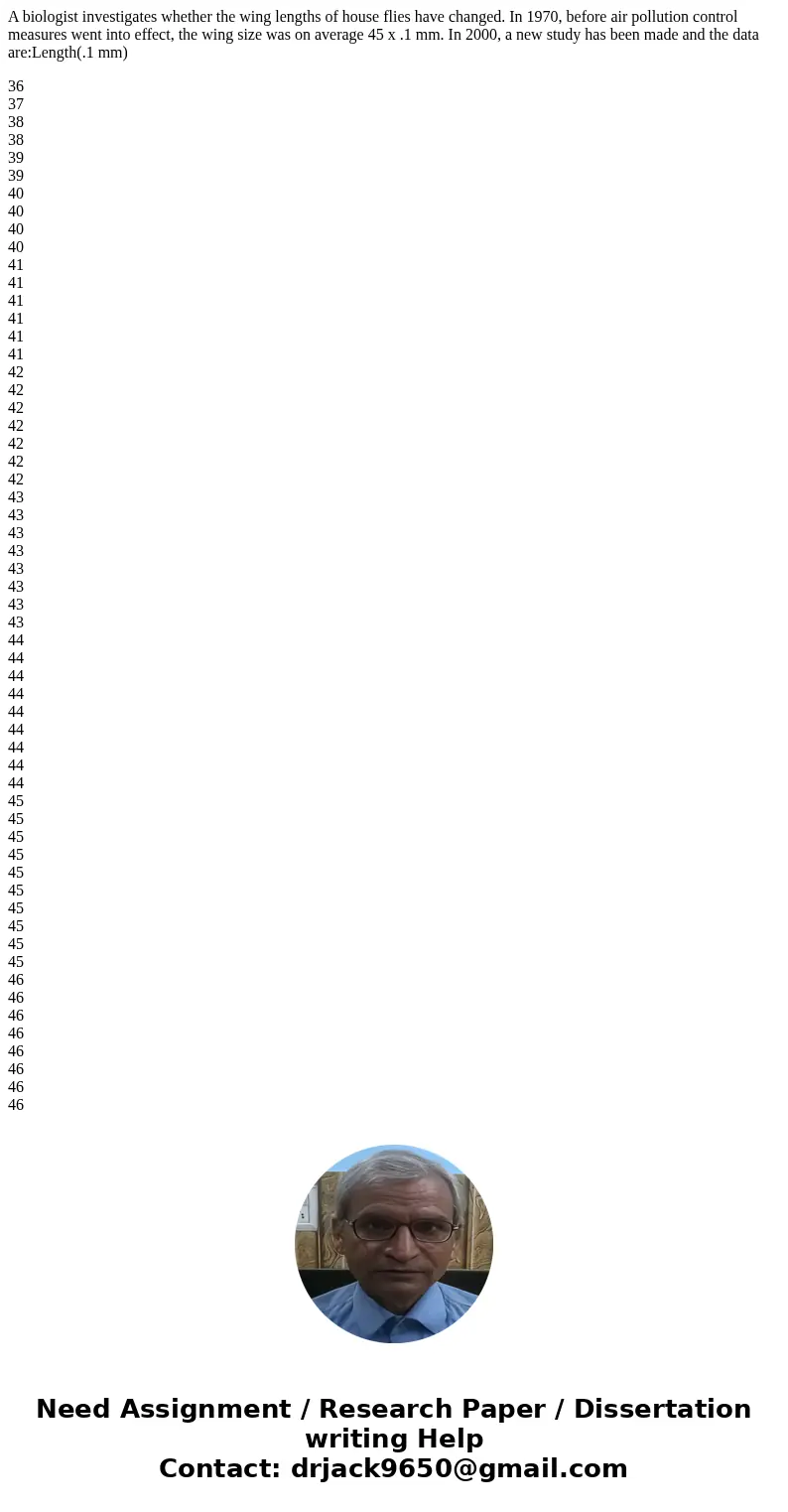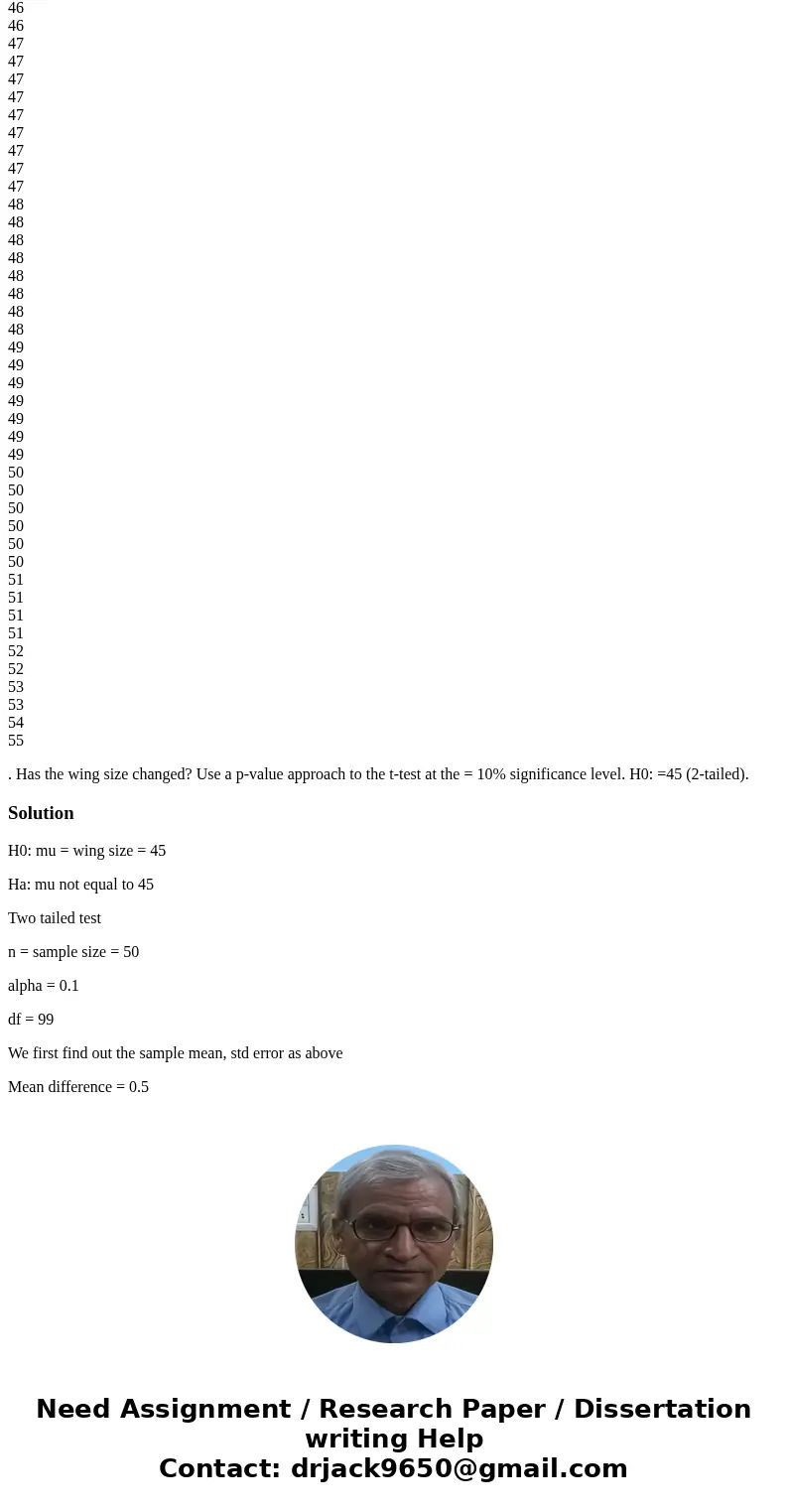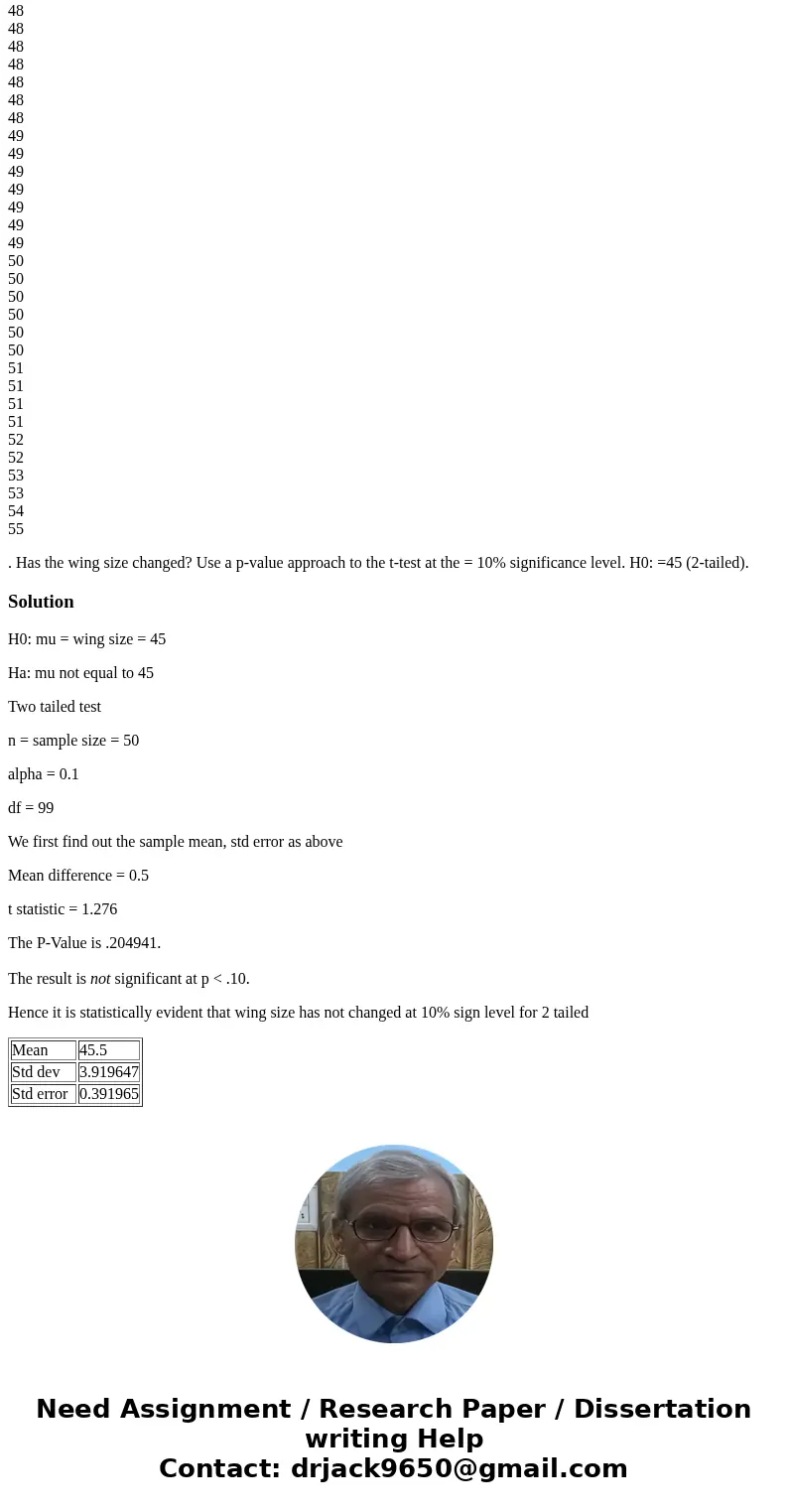A biologist investigates whether the wing lengths of house f
A biologist investigates whether the wing lengths of house flies have changed. In 1970, before air pollution control measures went into effect, the wing size was on average 45 x .1 mm. In 2000, a new study has been made and the data are:Length(.1 mm)
36
37
38
38
39
39
40
40
40
40
41
41
41
41
41
41
42
42
42
42
42
42
42
43
43
43
43
43
43
43
43
44
44
44
44
44
44
44
44
44
45
45
45
45
45
45
45
45
45
45
46
46
46
46
46
46
46
46
46
46
47
47
47
47
47
47
47
47
47
48
48
48
48
48
48
48
48
49
49
49
49
49
49
49
50
50
50
50
50
50
51
51
51
51
52
52
53
53
54
55
. Has the wing size changed? Use a p-value approach to the t-test at the = 10% significance level. H0: =45 (2-tailed).
Solution
H0: mu = wing size = 45
Ha: mu not equal to 45
Two tailed test
n = sample size = 50
alpha = 0.1
df = 99
We first find out the sample mean, std error as above
Mean difference = 0.5
t statistic = 1.276
The P-Value is .204941.
The result is not significant at p < .10.
Hence it is statistically evident that wing size has not changed at 10% sign level for 2 tailed
| Mean | 45.5 |
| Std dev | 3.919647 |
| Std error | 0.391965 |



 Homework Sourse
Homework Sourse